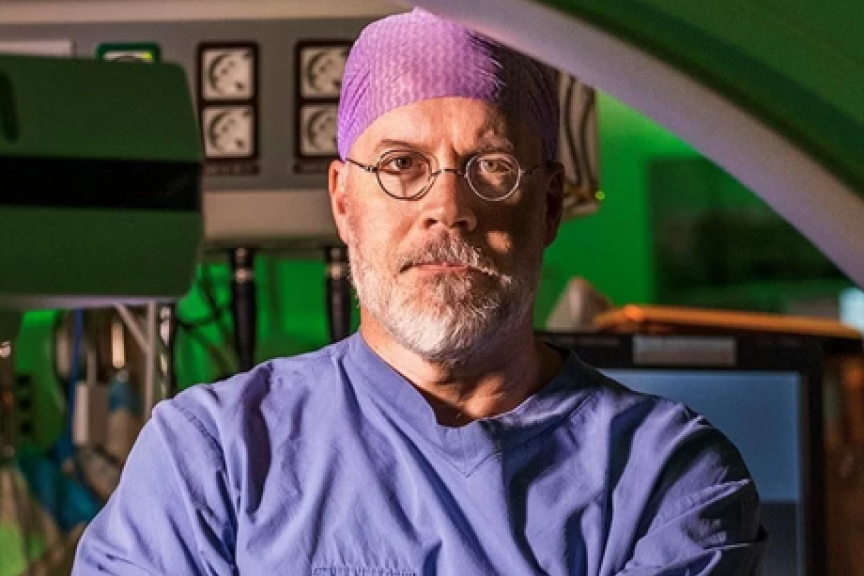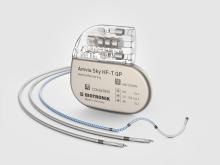Vascular Revolution Spurs Overdue Update to Radiation Guidelines
Prof. Anders Wanhainen Highlights New ESVS Recommendations, Advising on Suspended Personal Radiation Protection Systems for the First Time

The vascular revolution has made adapting radiation guidelines long overdue, says Prof. Anders Wanhainen, Chair of Vascular Surgery and Head of the Vascular Surgical Research Group at Uppsala University in Sweden. Recently, the European Society for Vascular Surgery (ESVS) updated its clinical practice guidelines in light of changing clinical practice and new evidence, to address growing concerns regarding radiation exposure in X-ray guided minimally invasive vascular surgery procedures. For the first time ever, the guidelines acknowledge the benefits of BIOTRONIK’s Zero-Gravity system. We spoke with Prof. Wanhainen, co-author of the guidelines, about what the new ESVS recommendations mean for practitioners, and whether other societies are likely to follow the European recommendations.
Why were the ESVS guidelines updated to include radiation system guidance?
The vascular revolution has made vascular surgery completely different. Instead of open repair we do a lot of endovascular fluoroscopy. Many of the procedures are really high radiation procedures at levels we’ve never seen before. For example, more complex thoracic and abdominal procedures have way higher radiation levels than we’ve seen in the past. So, the increasing number and complexity of procedures mean that interventionists today are exposed to higher levels of radiation than ever before. This makes it clear that the guideline recommendations were long overdue. In clinical practice there’s a strong need for guidelines that lead to better clinical practices, less radiation, and better protection. The guideline changes were the appropriate answer to today’s vascular surgery practice and needs.
In your view, what's the significance of this particular guideline change?
This is the guideline that will have a significant impact on everyday practice. Because we now have multiple specific clinical recommendations on how to do procedures, how to protect clinicians, what equipment you should have, what training you should have, how to measure radiation levels alongside other key variables, and how to maintain the radiation protection policy at your hospital. All these are now written down. Based on European law, most hospitals already have some sort of regulation in place and will have managed this before. But now the clinicians that actually perform these procedures are actively involved. It’s a good baseline to have and individual hospitals can obviously choose to go above and beyond. The guideline will have a very large effect on lab safety since approximately 80 percent of our procedures today are done with fluoroscopy.
What procedures do you think benefit from having a system like Zero-Gravity – including ones that might not be covered yet by guidelines?
This guideline is very comprehensive for the vascular cardiology field, but I imagine other intervention and cardiology fields may end up having a look at this guideline when considering their own policies. And we are getting a lot of interest during our major meetings, whether in seminars, workshops, or general conversation.
What variables do you think hospitals should consider when weighing a decision to get a system like Zero-Gravity?
In the guidelines, we have a strong recommendation for full-body protection equipment. We have Zero-Gravity at my hospital and I’ve been a proponent for this equipment. There are a couple of issues when implementing the system. Some colleagues hesitate at first, and the costs have to be considered.
But there are also numerous advantages that the system offers: First, the radiation protection of course. The head, brain, and eyes are particularly well protected with a Zero-Gravity system. But there’s also the ergonomic aspect reducing the weight the operator has to carry which benefits the back and the joints. We did have a colleague at my hospital who had spine surgery and wasn’t allowed to use lead equipment for six months. But she could operate using Zero-Gravity. So in a case like that, it was suddenly very helpful to have invested in the Zero-Gravity system.
The very high radiation procedures are only done at a small number of large centers. Many of them are already very interested in Zero-Gravity. While smaller centers tend to do shorter procedures with less radiation and a Zero-Gravity system may seem less relevant for them, however many of these centers are doing a lot of these procedures—so the radiation effects can be cumulative enough over time that an investment into Zero-Gravity can make sense.
What trends do you see in the field of radiation protection, what can we expect in the future?
In the last few years, two key publications in our field provided us important information: the first one shows acute DNA damages in operators, which was related to the individual ability to heal DNA damage1. And the second one from last year, which is even more important, showed chronic DNA damages, directly linked to cancer development2.
Half of the young vascular surgeons are female, which we know there is an increased risk for breast cancer. Therefore, should be better protecting their left axilla.
There is a growing interest for the topic because radiation for us is a major problem, and no matter how much you will improve your radiation protection behavior, you still have a large dose of radiation, so you need maximum protection and the Zero-Gravity is the end-stage product for that. It brings a tremendous benefit for the physician.
There have been invited talks at all big meetings to talk about the new guidelines and I hope that other regional societies will follow the ESVS recommendations soon and adapt their guidelines to match the needs of modern radiation practice.
__________________________________________________________________________________
References:
1. https://pubmed.ncbi.nlm.nih.gov/29054934/
2. https://www.ahajournals.org/doi/10.1161/CIRCULATIONAHA.121.058139
